In cold winters, "Warm House" will save you: a heating liquid that will prevent pipes from freezing
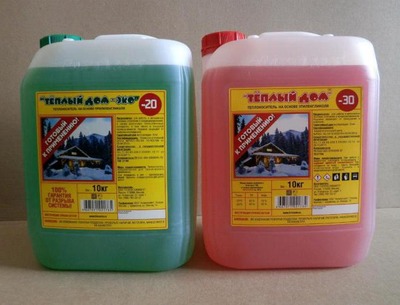
Representing itself household antifreeze, which is widely used in heating systems, the “Warm House” liquid is very popular.
It is made from pharmacological propylene glycol with the addition of fluorescein, which has green. And also propylene glycol can be added ethylene glycol with the final product obtained red color.
Regardless of the shade, the heating liquid "Warm House" perfectly copes with the task of heating in the temperature mode from –65 °C to +112 °C.
General description of "Warm House" for heating. Advantages
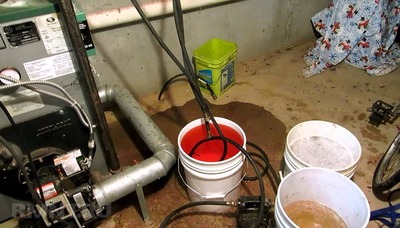
Being absolutely safe for people and animals, antifreeze "Warm House" when pouring it into the heating system can be used for 5 years without loss of properties.
It has found wide application in heating systems of private houses, and fully demonstrates the necessary qualities when used. in double-circuit boilers.
The absence of a negative effect on various materials: metal, plastic, rubber and flax allows us to call this antifreeze safe for use in various systems.
Main advantages:
- when using the product only for heating purposes, its service life increases up to 10 years;
- fire safety and explosion safety;
- environmental safety;
- presence of additives in the liquid (anti-foam, anti-corrosion, anti-scale) ensures stability of thermophysical properties;
- affordable price.
Negative characteristics
However, the product also has a number of disadvantages that should be taken into account when choosing a product for heating and air conditioning. These include:
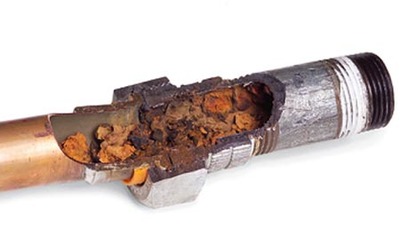
- impossibility of application for heating purposes in electrolysis boilers actions;
- the product contains salt, which during the period of use may be postponed in the form of scale or cause corrosion materials;
- antifreeze should not be mixed with other types of heating fluids without preliminary checking of the quality of the resulting solution, since a decrease in the degree of work of the additives with the rapid manifestation of corrosion is noted.
This antifreeze should not come into contact with zinc surfaces, since white flakes are formed, which negatively affects the effectiveness of the product.
Important! Considering that in 5 years its properties are preserved, its operation can be continued, but the properties of the additives are lost, which causes the appearance of scale and corrosion.
Cost indicator
The price of the heating liquid "Warm House" in comparison with analogues presented on the market today can be considered one of the most accessibleOn average, the cost of the coolant is 50-95 rubles per canister.
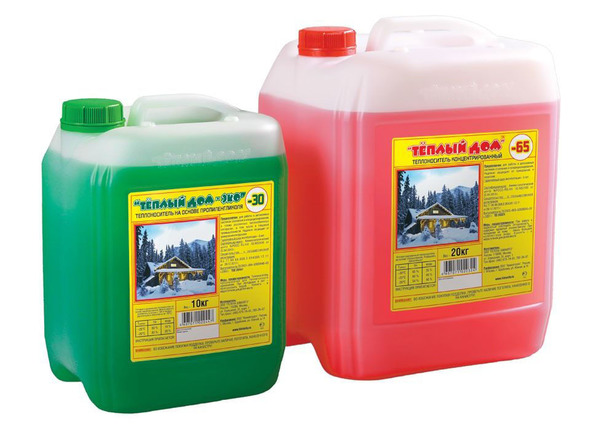
Photo 1. Two canisters of “Warm House” antifreeze: 10 kg with propylene glycol, 20 kg with ethylene glycol.
Types of liquid "Warm House"
Today, there are several types of the antifreeze in question on sale. Their characteristics and descriptions are presented below.
ECO-20
ECO-20 is being manufactured from a professional inhibitor with pronounced anti-corrosion properties, it contains additives that ensure the absence of foaming, scale formation in the heating and water supply system. It is neutral with respect to seals, various types of plastic and rubber.
The constancy of the chemical properties of the coolant ensures uninterrupted operation over the course of five years.
"Warm House"-30
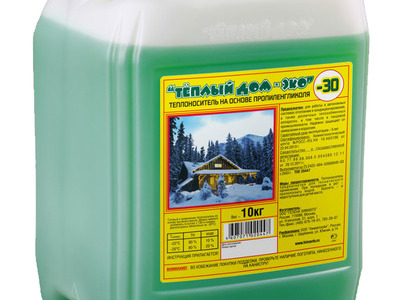
The liquid is released based on high-quality propylene glycol, has only green color.
It is widely used in heating and water supply systems, has passed the necessary tests and has certificates confirming its quality.
It is being released in 10 l canisters, special additives (inhibitors) increase the service life of antifreeze, reduce the degree of foaming during operation, and prevent corrosion.
The operating temperature range is from -45 °C to 106 °C.
Important! Proper operation of the heating system allows extend the period high-quality work of the solution for 10 seasons.
"Warm House"-65
The liquid consists of from ethylene glycol and has proven itself to be excellent when operating in a range of temperatures -65 °С +112 °C. When the temperature drops, the antifreeze does not freeze. And with an increase in volume, its consistency changes to a gel-like structure. When diluted with water, the viscosity of the final product decreases, and the thermal conductivity index increases.
Correct application
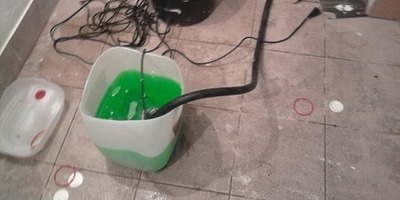
To obtain a working composition, the original antifreeze is diluted with water. When adding 10% liquid the crystallization start indicator changes and becomes equal to -25 °C, when increasing up to 20% — the start of crystallization begins at -20 °C.
When replacing a coolant that has exhausted its resources, you should flush the system with water or a special liquid.
Important! A special condition for preserving the original qualities of this type of antifreeze is not bringing it to a temperature of +170 °C, when additives decompose and the working qualities of the solution are significantly reduced.
Useful video
Watch a video that talks about the pros and cons of antifreeze for heating systems.
Reasons to use a heat carrier
All types of antifreeze "Warm House" have undergone the necessary research and have quality and safety certificates, sanitary and epidemiological reports, have been tested at the Research Institute of Plumbing. Due to the presence of several varieties of "Warm House" on the market, it is possible to select the best option for a product with a long service life depending on the operating conditions.
Liquid of all varieties of "Warm House" is sold in plastic containers 10 l and 20 kg.





